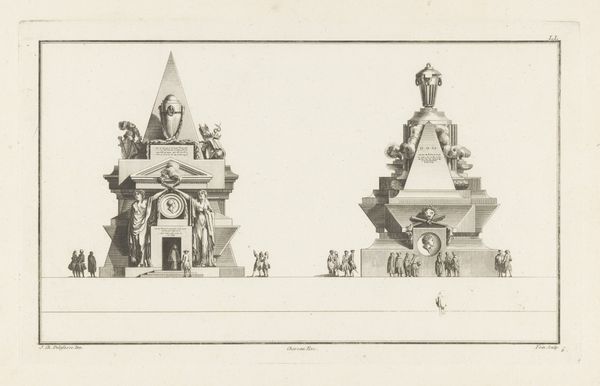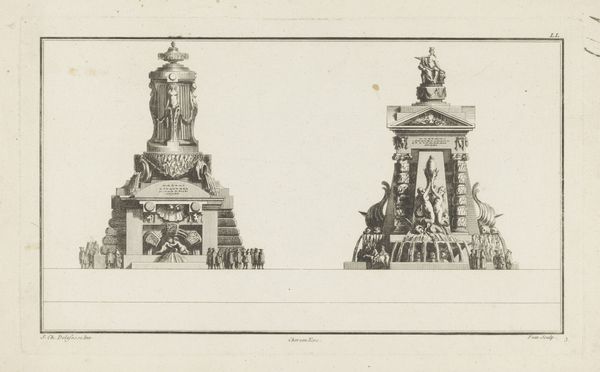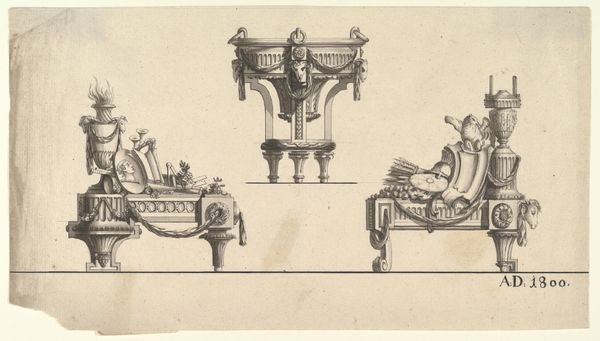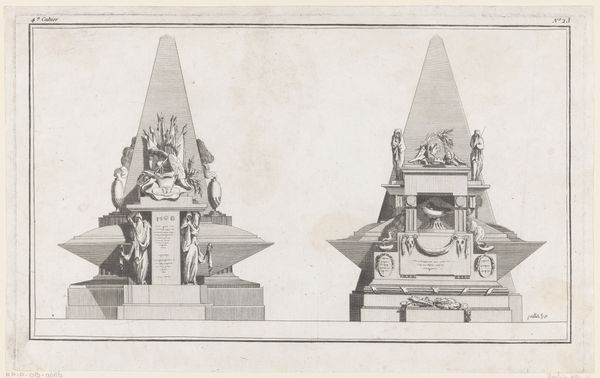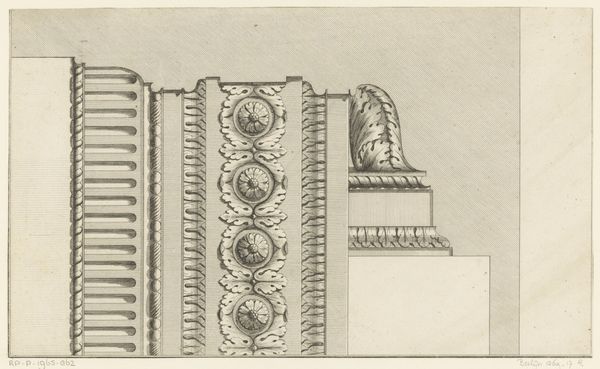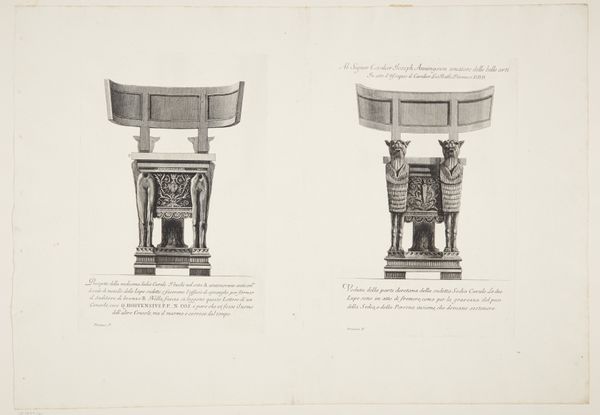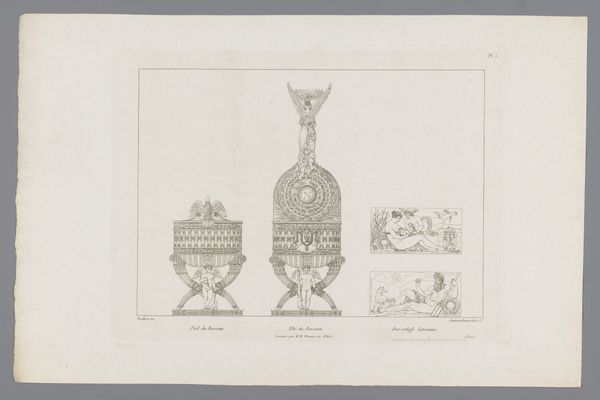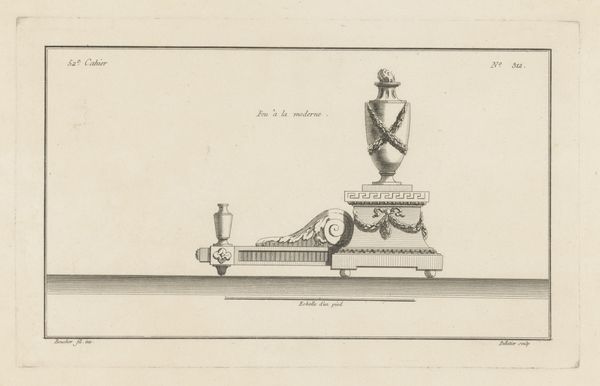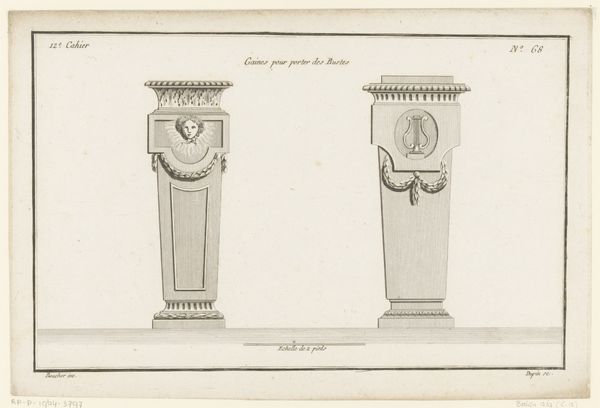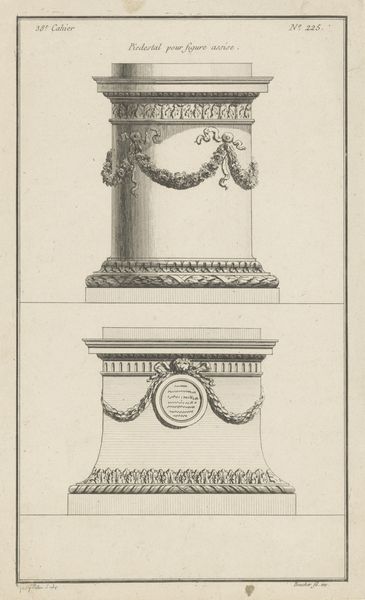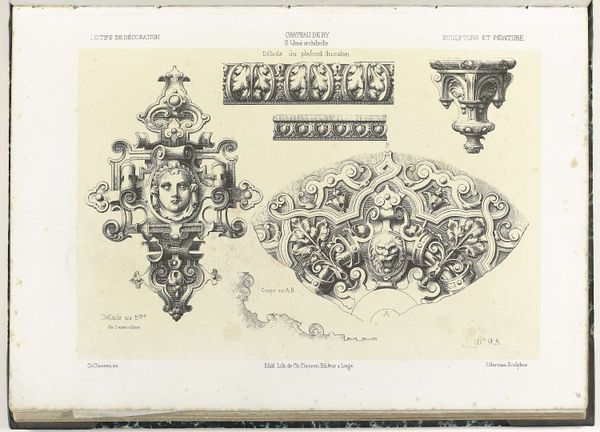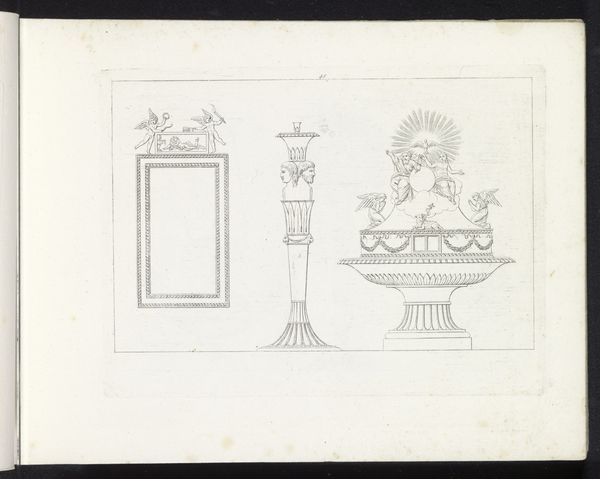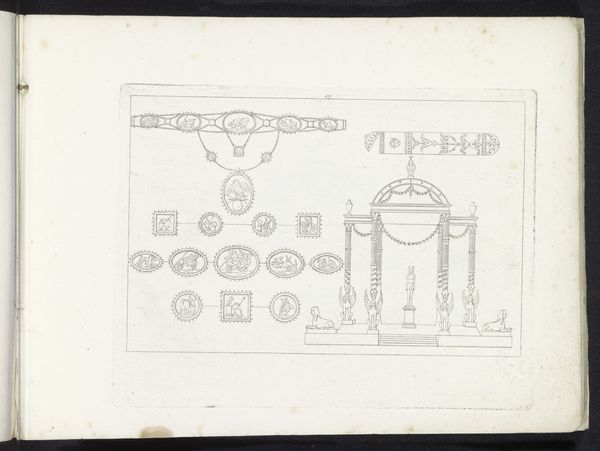
drawing, print, engraving, architecture
#
drawing
#
neoclacissism
# print
#
old engraving style
#
landscape
#
form
#
geometric
#
history-painting
#
engraving
#
architecture
Dimensions: height 225 mm, width 376 mm
Copyright: Rijks Museum: Open Domain
Curator: I'm immediately struck by the starkness of this print, almost like an architectural blueprint. There's a chill formality that emanates from these imagined tombs. Editor: Indeed. This is "Twee tombes" or "Two Tombs," an engraving from 1771 by Augustin Foin. It showcases two monument designs. The grandeur definitely reflects the Neoclassical style gaining popularity then. Curator: Neoclassical, yes, absolutely. That reliance on geometric forms, the clear lines, it's all intended to evoke a sense of solemnity. And the people at the base of each structure truly highlight the tomb's scale, don’t they? It emphasizes mortality. I keep being drawn to those circular portraits embedded within each tomb - it’s fascinating how the headshot survived millennia as a powerful visual shorthand. Editor: Agreed. And consider how prints circulated. Foin's work would have disseminated these aesthetic and philosophical ideas about death, memory, and civic virtue far beyond the elite circles who commissioned grand monuments. Curator: It’s interesting how the engraving style itself seems to mimic the desired effect, it almost adds to the overall feeling of classical stoicism. Everything is rendered with a precise hand, evoking order. But I wonder… doesn't this idealization also somewhat sanitize death, abstracting it into a formal exercise? Editor: It certainly presents a curated vision, yes. However, we can also understand this as a reflection of Enlightenment ideals—the desire to impose rational order even upon the most chaotic of human experiences. Curator: Yes, order as a sort of conquest. But I think there are multiple interpretations, what does DOM above each mean to you? For example the one one the right feels somehow feminine? Does that mean it for the queen or just evoke feelings through shapes alone? And in contrast, is the other intentionally stoic or powerful through a geometric almost war-like nature. Is that something you can read as a societal statement? Editor: D.O.M. refers to Deo optimo maximo. "To God, the best and greatest." So while your interpretations about shapes, styles and meaning seem sound. It does remind me we cannot inject modern sensibilities. I do feel those portraits speak a language of permanence, of a legacy intended to transcend time, which given our presence is quite a truth in advertising. Curator: Very true! Augustin Foin certainly understood how to use the symbolic language of form and proportion to speak to posterity, in a lasting fashion. Editor: An enduring visual document of artistic taste, indeed.
Comments
No comments
Be the first to comment and join the conversation on the ultimate creative platform.
